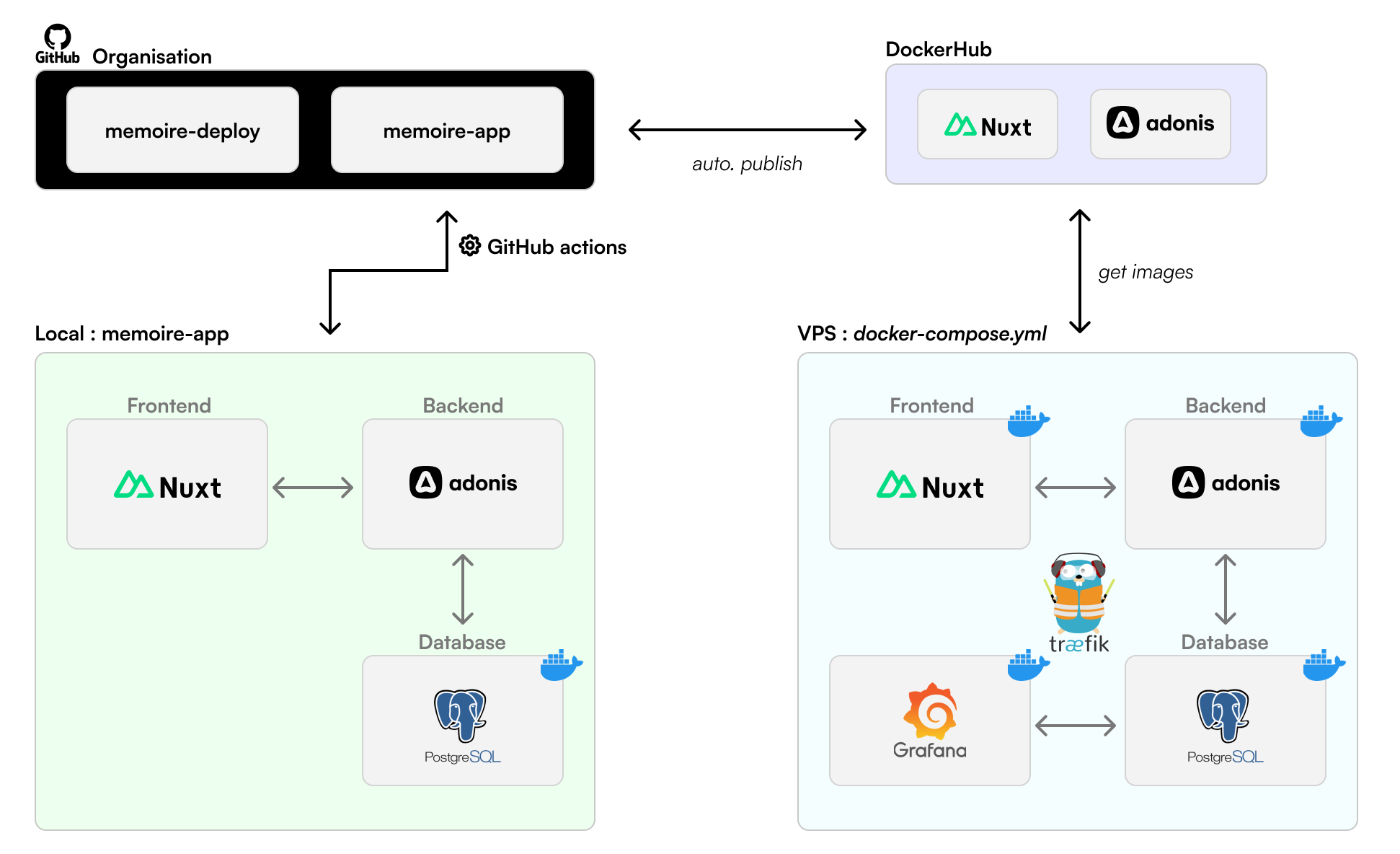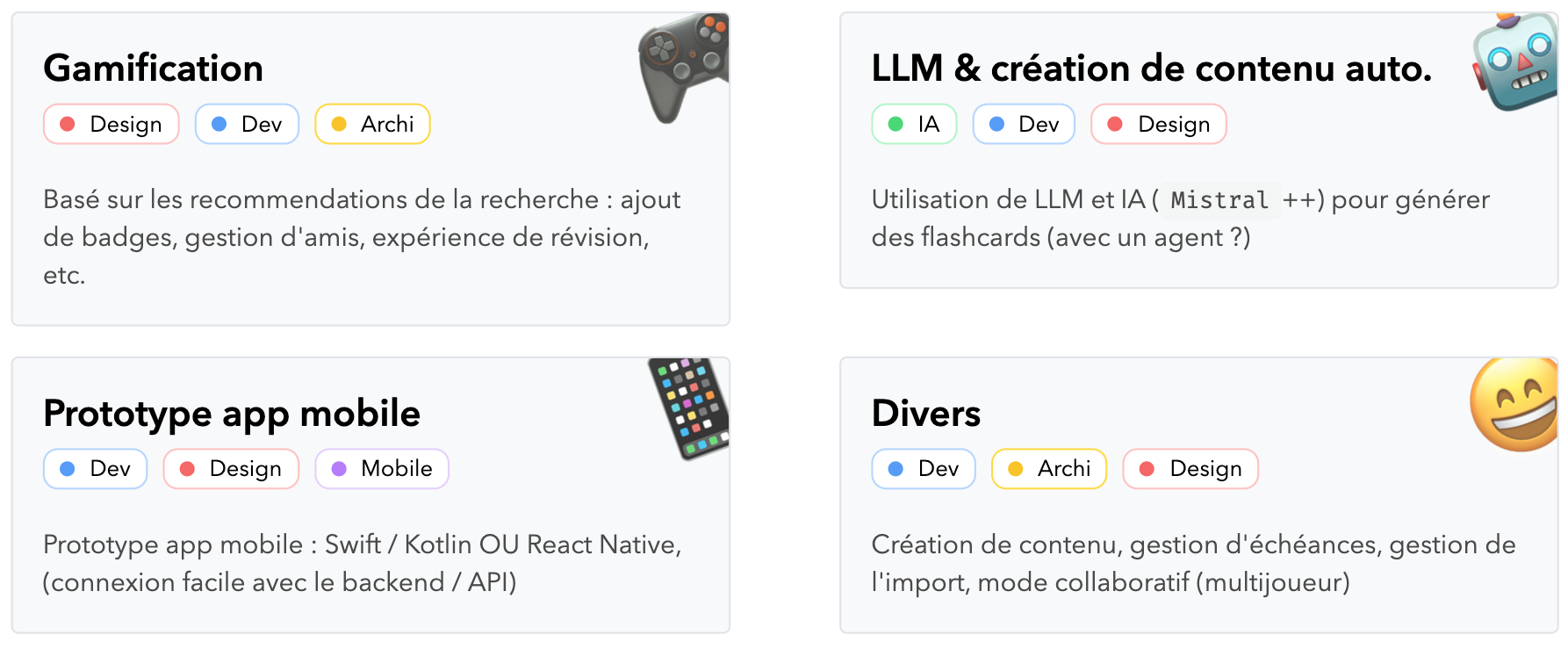Memoire: A Flashcard Project
What's this project about?
Memoire is a flashcard project I've been working on for a few weeks now. The goal is to create a tool that helps me memorize things more efficiently using flashcards.
After some readings about in technology-enhanced-learning, I've identified limitations about existing tools: UX, flexibility, but also open-source alternatives or research-friendly tools.
This post will mostly talk about the project's inception, the technologies I've used, and the first steps I've taken to build it. I won't go too deep in the technical details, this will be the subject of future posts.
Technology-Enhanced Learning
is a broad term that refers to the use of technology to support learning.
It's been 2 years that I've worked in the field of TEL: my apprenticeship at Kosmos and within the TALENT team at IRIT. This field particularly interests me because it combines my passion for technology and my interest in education.
The 4 pillars of learning
Stanislas Dehaene, a French neuroscientist, has identified 4 pillars of learning: Attention, Active Engagement, Error Feedback, and Consolidation. In his book (Les talents du cerveau, le défi des machines), he explains how these 4 pillars are essential to learning. This book is incredibly interesting and I highly recommend it. Basically, the idea is that learning is a complex process that involves several mechanisms in the brain and the mobilization of multiple cognitive functions is necessary to learn effectively.
Spacing & Testing effects
Two concepts are particularly interesting in the field of learning: the spacing effect and the testing effect.
The spacing effect is the idea that we learn better when we space our learning over time. The testing effect is the idea that we learn better when we test our knowledge.
These 2 effects are the basis of the spaced repetition technique, which is the foundation of many flashcard tools such as Anki or SuperMemo. The idea is to review information at increasing intervals of time to improve long-term retention.
Global architecture
This is the global architecture of the project:
 I chose to work with
I chose to work with
I wanted to keep the project simple and focus on the core features. I also wanted to make it easy to deploy and maintain, thus the choice of Docker and the pipeline with Github Actions.
Research-oriented features
The main goal of Memoire is to help me memorize things more efficiently. But I also want to make it a research-friendly tool. To enable this, I plan to add features to make it easy to export data, to analyze it, and to integrate it with other tools or be compliant with xAPI.
The project is open-source and one goal is also to make it easy to deploy and maintain for other people, on their own infrastructure.
What's next?
Here are some features I plan to add in the future:

A lot of work remains to be done. After exploring some Linear products and company vision, I'll also focus the work on providing a better user experience and a more flexible tool.
I'm very excited about this project and I can't wait to see where it will lead me. I plan to write more posts about it in the future, so stay tuned!